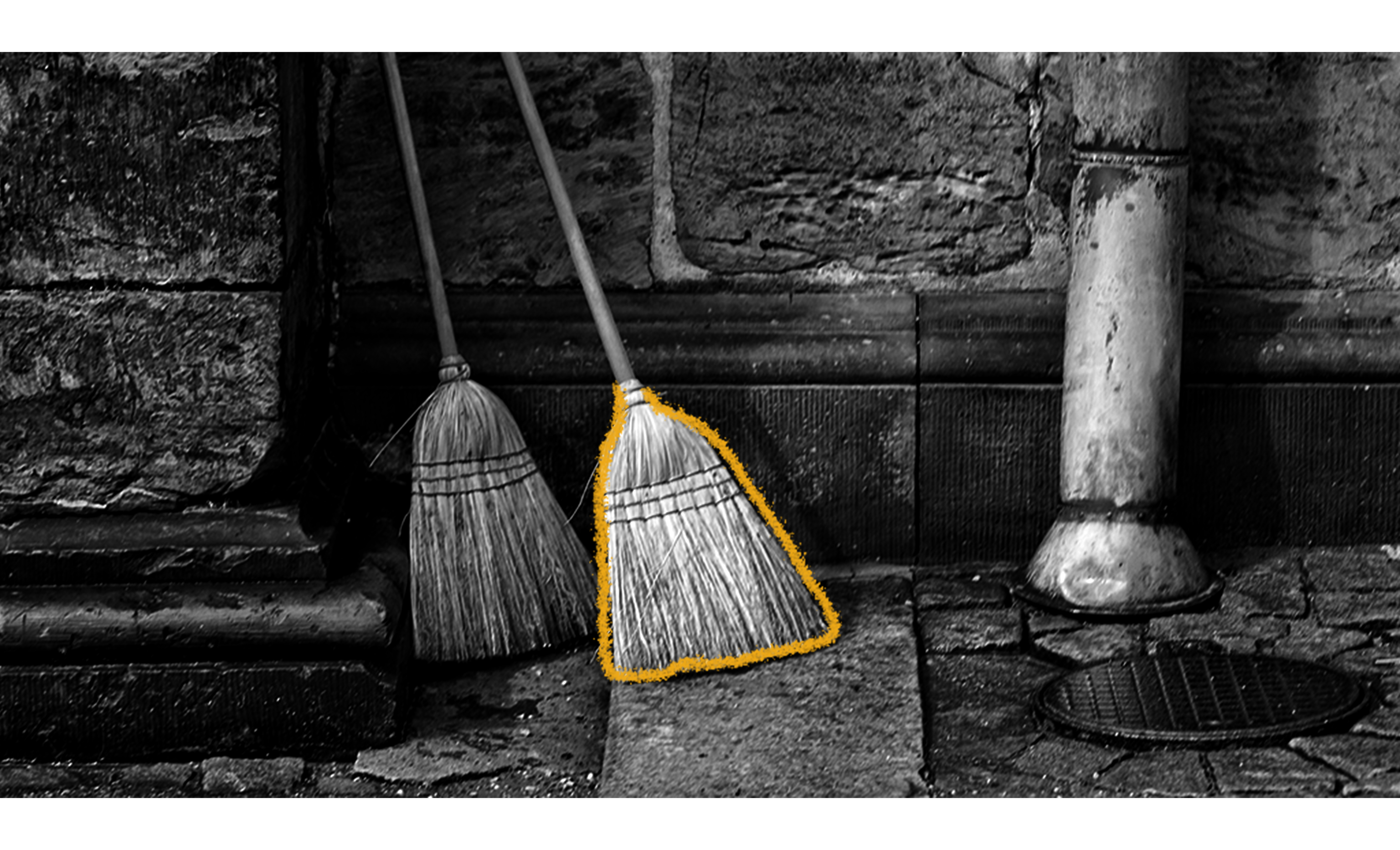Brooms made from bundles of twigs, reeds, corn husks, and other natural fibers have almost certainly been used since the dawn of civilization, first to sweep up ash and embers around fires and, later, around hearths. Brooms are even mentioned in the Bible. While there was a broom-making profession in 18th century England (its artisans were known as “besom squires”), until the 19th century, the majority of broom-making was largely an at-home affair that involved whatever materials were available. These brooms had a short lifespan and needed to be replaced often. More modern broom making began in the late 1700s, when a previously underappreciated crop called sorghum vulgare (later known as “broomcorn”) was cultivated more aggressively after a farmer from Hadley, Massachusetts named Levi Dickinson had the idea to use the grass to make brooms for his wife and their neighbors in 1797. By 1800, he and his sons were making several hundred of them a year and other farmers quickly followed suit. Broom machines (a set of vices, clamps and a foot treadle) were created to make the task easier. Then the Shakers, a Christian religious sect centered in the Northeast and known for their artisanal skills, made one of the only major updates to the broom in history: they made it flat. Broom-making exploded in popularity but, like many trades, transitioned from home-based artisanal operations to factory settings due to industrialization. However, many small broom shops in America were able to expand into factories while staying in business because their manufacturing techniques continued to require skilled, hands-on labor. Then in 1994, NAFTA made Mexican brooms cheaper and forced many American operations to close. The broom and broom-making underwent a few other changes in the 20th century as well. Synthetic fibers were developed in the 1940s, and by the 1950s and 1960s, brooms made with synthetic fibers hit the market. (They were especially prevalent in larger, push-style brooms.) Today, both natural fiber and synthetic fiber brooms are available for purchase and many homes keep one of each on hand.

Your go-to guide for weird history facts
Subscribe to the FREE daily email that makes learning about history fun.


